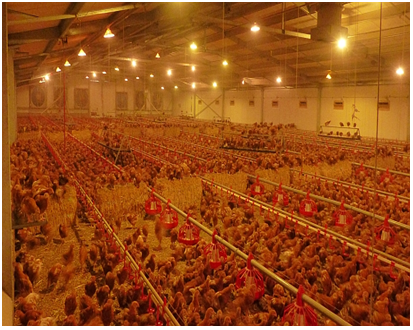Poultry is the fastest growing business sector in animal agriculture in India. The estimated worth of the poultry sector is estimated to be approximately rupees one lakh crores. The poultry industry in India has endured an exemplary transformation in structure and operation during the last two decades and modified into a mega-industry with the presence of a huge number of workers from a mere backward poultry farming that appears to be very fast. When we see the complete overview, the production of crops has been growing at a rate of 1.5-2% per annum whereas the production of eggs and broilers has been growing at a rate of 8-10% per annum. India is the third-largest producer of eggs and the fifth-largest producer of chicken meat in the world. Chicken meat is the second most widely consumed meat in the world and has come out as the second most widely consumed meat in the world.
After maintaining a clean and hygienic environment through proper poultry farming practices, routine preventative actions are the next line of defence against disease. Among the preventative strategies are:
- Vaccination
- Parasite control
- Identifying and treating sick birds
- Separating multi-age flocks
- Practising routine biosecurity procedures between flocks and staff working with them.
Vaccination: Many poultry diseases can be prevented with vaccination. Follow a proper vaccination programme or only buy a stock that has been properly vaccinated. When purchasing chicks or pullets, ask your supplier for vaccination certificates.
Poultry vaccinations include Avian encephalomyelitis, Chicken anemia, Egg drop syndrome 76, Fowl cholera, Fowl pox, Infectious bronchitis, Infectious bursal disease, Infectious bursal disease, Infectious coryza, Infectious laryngotracheitis, Marek’s disease, Newcastle disease.
For breeders of poultry, when vaccinating: Always follow the label’s recommendations, including the storage conditions. Use syringes and needles that are disposable. Be sure to properly dispose of any unwanted vaccines, syringes, or needles, and keep the area clean but never use detergents or disinfectants near immunization equipment. Before vaccinating with fowl pox or Marek’s HVT vaccine, do not disinfect your skin because this will kill the vaccine virus.
Parasite control
Internal and external parasites will be more prevalent in birds kept on the floor with access to pastures and outdoor spaces. It’s critical to have a preventative programme in place for birds kept in these conditions and to treat them as needed. This reduces physical stress and keeps birds in good health, allowing them to resist sickness. Parasites can be controlled by:
- Regularly inspecting birds for external parasites
- Spraying or dusting birds thoroughly with an approved insecticide if you can see lice or mites – spray the shed, perches and nests thoroughly, making sure the insecticide gets into crevices
- Cleaning sheds and rotating ranges to prevent worms
- Regularly checking faecal material for any sign of worms
- Always checking the label on worming treatments for withholding periods as some are not suitable for production birds
- Consulting a veterinarian.
Remove sick birds
Observe your birds on a regular basis for symptoms of illness or difficulties within the flock, such as feather plucking. Remove unwell chickens and other poultry from the main flock and consult a professional for a diagnosis. The appearance of sick birds differs from that of healthy birds. Once you’ve identified the ailment or problem, you’ll be able to administer the appropriate treatment. Keep sick birds separated from the rest of the flock until they have fully recovered. It is critical to follow any withholding periods if medication is administered.
Multi-age flocks
When younger birds are introduced into a flock of older birds, the chance of disease transmission from the older birds to the younger birds increases. Diseases and pathologies that younger birds have not been exposed to are often built into the resistance of older birds. When introducing new birds to a flock, there is a higher chance of feather pecking and social difficulties. From a disease standpoint, single-aged flocks are preferred. If this is not possible and you have multi-age flocks, you should:
- Separate age groups – use an all-in/all-out method for each age group to ensure that facilities and equipment are thoroughly cleaned and disinfected between batches.
- Always start work with younger poultry and finish with the oldest.

Dr. Gunjan Sharma1, Dr. Divyanshu Singh Tomar2
1B.V.Sc. & A.H., M.V.Sc. (Animal Nutrition), Dr. G.C. Negi College of Veterinary and Animal Sciences, CSK Himachal Pradesh Krishi Vishwavidhyalaya, Palampur, H.P.
Contact: 8827552360
E-mail; nikki.gunjan16@gmail.com
2B.V.Sc & A.H., M.V.Sc (Livestock Production Management), ICAR- National Dairy Research Institute, Karnal, Haryana
E-mail; dstomar26oct@gmail.com















